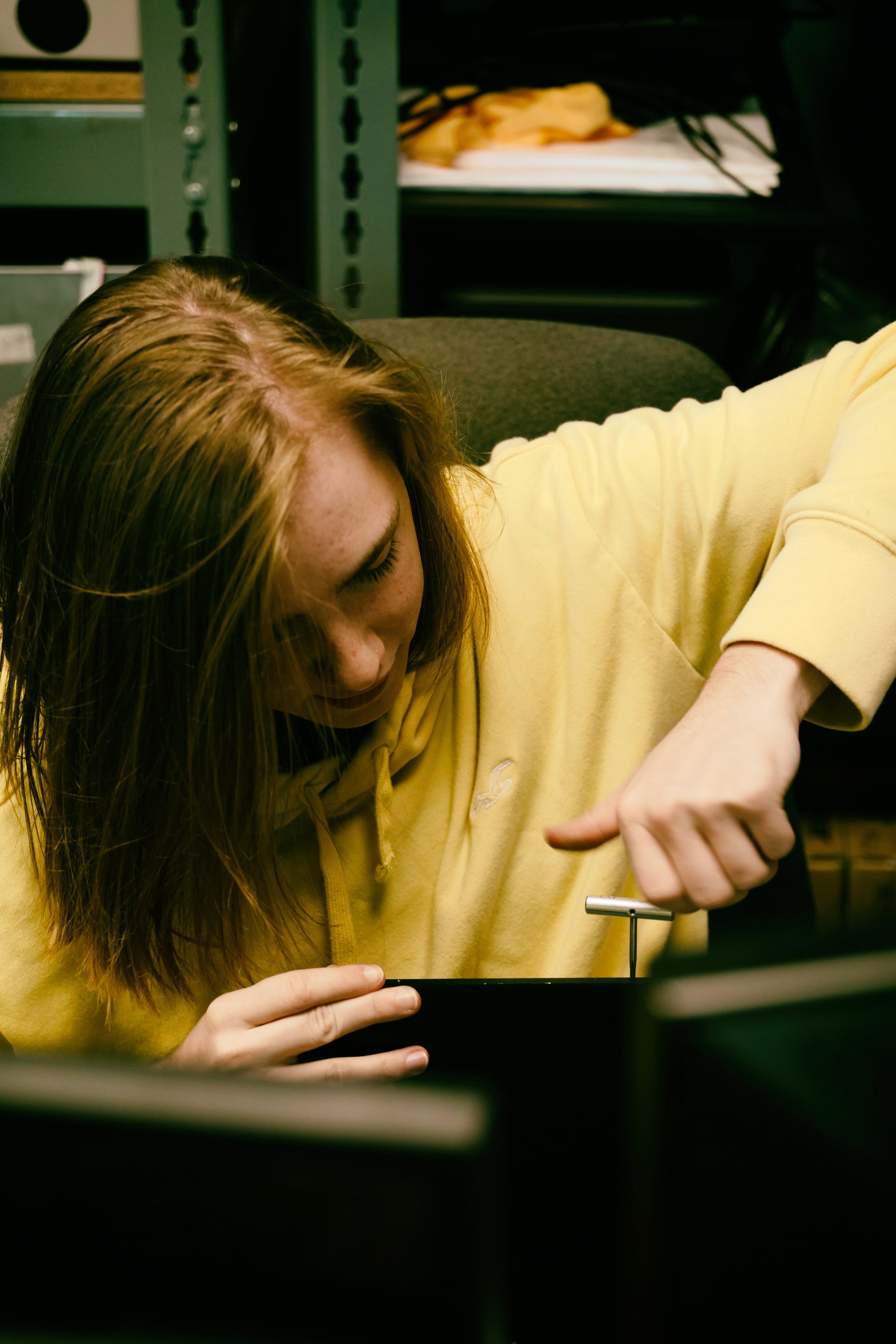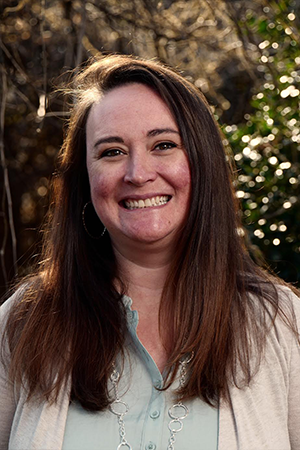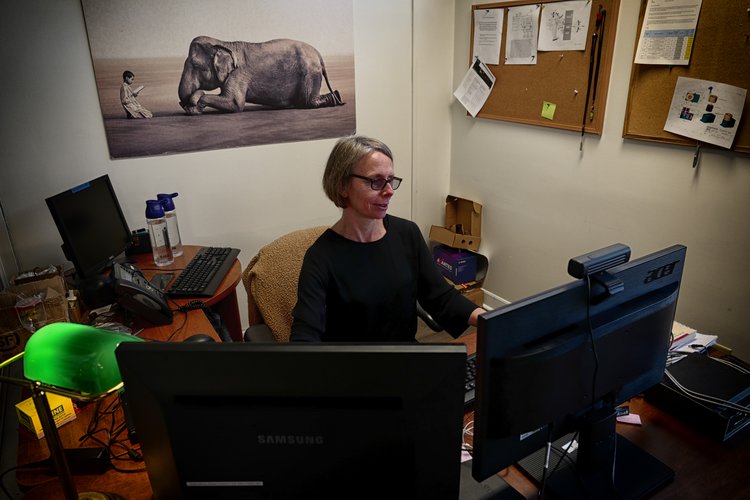7 Easy Facts About Uv/vis/nir Shown
7 Easy Facts About Uv/vis/nir Shown
Blog Article
Examine This Report on Spectrophotometers
Table of ContentsUv/vis - QuestionsThe Of Circular DichroismThe Ultimate Guide To Uv/vis/nirThe 7-Second Trick For SpectrophotometersUv/vis/nir - QuestionsHow Spectrophotometers can Save You Time, Stress, and Money.Excitement About Uv/vis/nirThe Single Strategy To Use For Circular Dichroism5 Simple Techniques For SpectrophotometersThe Best Guide To Circular DichroismThe 7-Minute Rule for SpectrophotometersThe 10-Minute Rule for Uv/vis/nirSome Known Details About Uv/vis/nir
It is then scanned through the sample and the referral solutions. Fractions of the event wavelengths are sent through, or shown from, the sample and the reference. The resultant light strikes the photodetector device, which compares the relative strength of the 2 beams. Electronic circuits transform the relative currents into linear transmission percentages and/or absorbance/concentration values.The transmission of a referral compound is set as a baseline (datum) value, so the transmission of all other substances are taped relative to the initial "zeroed" compound. The spectrophotometer then converts the transmission ratio into 'absorbency', the concentration of particular elements of the test sample relative to the initial compound.
Since samples in these applications are not readily offered in big quantities, they are specifically suited to being evaluated in this non-destructive technique. In addition, precious sample can be saved by utilizing a micro-volume platform where as low as 1u, L of sample is needed for complete analyses. A short description of the treatment of spectrophotometry consists of comparing the absorbency of a blank sample that does not include a colored substance to a sample that consists of a colored compound.
Spectrophotometers - Truths
In biochemical experiments, a chemical and/or physical home is chosen and the treatment that is utilized is particular to that property in order to derive more information about the sample, such as the amount, purity, enzyme activity, etc. Spectrophotometry can be used for a number of strategies such as figuring out optimum wavelength absorbance of samples, figuring out optimum p, H for absorbance of samples, figuring out concentrations of unidentified samples, and determining the p, Ka of different samples.: 21119 Spectrophotometry is also a handy procedure for protein filtration and can likewise be used as a technique to develop optical assays of a compound.
It is possible to know the concentrations of a two part mixture using the absorption spectra of the basic solutions of each component. To do this, it is needed to understand the termination coefficient of this mixture at 2 wave lengths and the extinction coefficients of options that include the recognized weights of the two elements.

Getting My Circularly Polarized Luminescence To Work
A lot of spectrophotometers are utilized in the UV and visible areas of the spectrum, and a few of these instruments likewise operate into the near-infrared Area. The concentration of a protein can be estimated by determining the OD at 280 nm due to the existence of tryptophan, tyrosine and phenylalanine (https://visual.ly/users/julieanndesalorenz30606/portfolio).
This technique needs a spectrophotometer capable of determining in the UV area with quartz cuvettes.: 135 Ultraviolet-visible (UV-vis) spectroscopy involves energy levels that delight electronic shifts. Absorption of UV-vis light delights molecules that are in ground-states to their excited-states.
These curves can be utilized to check a brand-new batch of colorant to check if it makes a match to specs, e
Traditional visible region noticeable area not detect if a colorant or the base material has fluorescence. This can make it tough to handle color issues if for example one or more of the printing inks is fluorescent. There are 2 major setups for visual spectrum spectrophotometers, d/8 (round) and 0/45.
Researchers utilize this instrument to measure the quantity of compounds in a sample. In the case of printing measurements two alternative settings are commonly utilized- without/with uv filter to control better the effect of uv brighteners within the paper stock.
The Best Guide To Uv/vis/nir
Some applications require little volume measurements which can be performed with micro-volume platforms. As described in the applications section, spectrophotometry can be used in both qualitative and quantitative analysis of DNA, RNA, and proteins. Qualitative analysis can be used and spectrophotometers are used to tape-record spectra of substances by scanning broad wavelength regions to figure out the absorbance residential or commercial properties (the strength of the color) of the substance at each wavelength.

Examine This Report about Circularly Polarized Luminescence
One significant factor is the type of photosensors that are offered for different spectral regions, but infrared measurement is also tough due to the fact that virtually whatever emits IR as thermal radiation, specifically at wavelengths beyond about 5 m. Another complication is that several materials such as glass and plastic take in infrared, making it incompatible as an optical medium.
Samples for IR spectrophotometry may be smeared between 2 discs of potassium bromide or ground with potassium bromide and pushed into a pellet. Where liquid services are to be measured, insoluble silver chloride is utilized to build the cell. Spectroradiometers, which operate nearly like the noticeable region spectrophotometers, are created to determine the spectral density of illuminants. 2013. p. 13. Allen, DW; Cooksey, C; Tsai, BK (Nov 13, 2009). "Spectrophotometry". Recovered Dec 23, 2018. Ninfa AJ, Ballou DP, Benore M (2010 ). Fundamental Laboratory Approaches for Biochemistry and Biotechnology (2nd ed.). Hoboken: Wiley & Sons. ISBN 9780470087664. OCLC 488246403. Schwedt G (1997 ). The essential guide to analytical chemistry.
Oke, J. B.; Gunn, J. E.
The Best Guide To Uv/vis/nir

1021/ac50048a728. ISSN0003-2700. Ninfa AJ, Ballou DP, Benore M (2015 ). Fundamental Lab Methods for Biochemistry and Biotechnology (3, rev. ed.). Hoboken, NJ: Wiley & Sons. p. 77. ISBN9780470924525. OCLC915641828. "Totally Automatic Double Beam - Atomic Absorption Spectrophotometer (AA 8000)". Lab Devices. Labindia Analytical Instruments Pvt. Ltd. "Spectrophotometry Applications and Principles".
Our Circular Dichroism Ideas
"Applied Spectrophotometry: Analysis of a Biochemical Mixture". Biochemistry and Molecular Biology Education. Journal of Biochemistry Education.
The smart Trick of Circularly Polarized Luminescence That Nobody is Talking About
U.S. Department of Commerce National Bureau of Standards unique publication; 378. Washington, D.C.: U.S. National Bureau of Standards.
The process starts with a regulated source of light that brightens the examined sample. When it comes to reflection, as this light connects with the sample, some is soaked up or emitted. The produced light travels to the detector, which is evaluated, measured, and presented as industry-standard color scales and indices.
All terms are assessed over the visible spectrum from 400 to 700 nm. In the case of transmission, when the light interacts with the sample, it is either soaked up, reflected, or transmitted.
Some Known Details About Uv/vis
Examples include APHA (American Public Health Association) for watercolor and pureness analysis, ASTM D1500 for petrochemical color analysis, edible oil indices utilized in food, and color analyses of drinks. All terms are assessed over the visible spectrum from 400 to 700 nm.
Image Credit: Matej Kastelic/ Dr. Arnold J. Beckman and his coworkers at the National Technologies Laboratories initially developed the spectrophotometer in 1940. In 1935 Beckman founded the company, and the discovery of the spectrophotometer was their most ground-breaking innovation. Dr. Bruce Merrifield, a Nobel prize-winning biochemist, specified that the invention of the spectrophotometer was "most likely the most essential instrument ever developed towards the advancement of bioscience." Before the discovery of the spectrophotometer, chemical analyses took weeks to finish, with 25% accuracy.
Little Known Facts About Spectrophotometers.
Over time, scientists kept improving the spectrophotometer style to improve its performance. The UV capabilities of the design B spectrophotometer were improved by changing the glass prism with a quartz prism.
Typically, a spectrophotometer is made up of two instruments, namely, a spectrometer and a photometer. A standard spectrophotometer contains a light source, a monochromator, a collimator for straight light beam transmission, a cuvette to place a sample, and a photoelectric detector.
Spectrophotometers Things To Know Before You Buy
There are sites different kinds of spectrophotometers in various sizes and shapes, each with its own purpose or performance. A spectrophotometer figures out just how much light is shown by chemical elements. UV/Vis/NIR. It measures the difference in light intensity based upon the total amount of light introduced to a sample and the quantity of beam that passes through the sample solution
A spectrophotometer is used to figure out the concentration of both colorless and colored solutes in a solution. This instrument is utilized to figure out the rate of a response.
Report this page